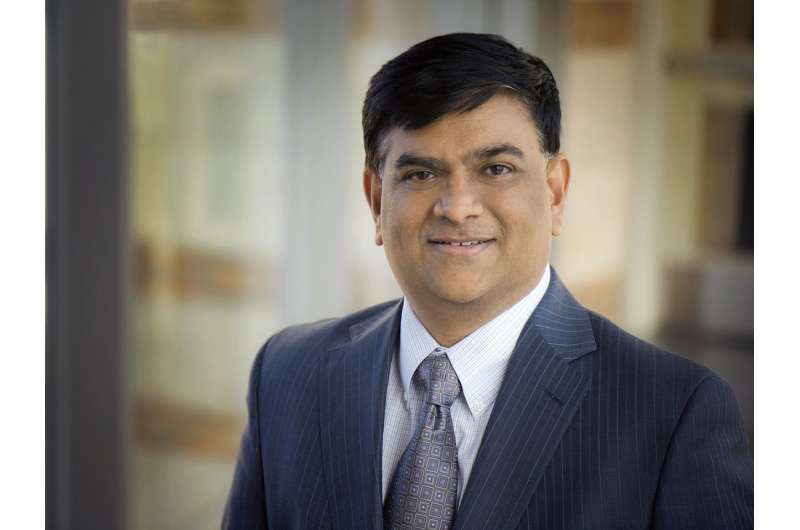Civil engineer patents integrated sensor and algorithm to monitor stiffness in soils

Anand Puppala, associate dean for research in the College of Engineering at The University of Texas at Arlington and a civil engineering professor, recently was awarded a patent for developing a sensor system with an algorithm that will expedite field assessment of stabilization of high sulfate soils near bridges and roads.
Patent No. 9,822,504, titled "Systems, Apparatuses and Methods for assessing soil heave," was issued in November. It is Puppala's first patent. He received it with his collaborator, Xiong Yu of Case Western Reserve University.
Puppala's algorithm works with an integrated moisture sensor and a time domain reflectometry, or TDR, probe. The sensor, which has bender elements, is integrated with the time domain reflectometry strip. This integrated sensor is placed in the soil and measures the soil stiffness and moisture content when the soil begins to heave. When stabilizing soils with chemicals, which is typical in road construction, soil stiffness generally increases over time. However, in soils with sulfates the reverse is true because the sulfates begin to have chemical reactions that impede positive stabilization reactions. Many times, stabilized soils shift or bulge at the surface, which is known as heaving.
"It can take months for issues to become apparent, and at that point it can be very problematic and cost states millions of dollars for repairing heaved roads. With this method, engineers can test a section during construction on sulfate-rich soils and detect a loss of soil stiffness within one to two days, potentially saving millions of dollars by choosing other methods that may work best for these soils," Puppala said.
The research that led to the patent was funded by an Innovations Deserving Exploratory Analysis, or IDEA, grant from the National Academy of Sciences' National Cooperative Highway Research Program.
The work is an example of UTA's commitment to fostering sustainable urban communities, a theme of the university's Strategic Plan 2020 Bold Solutions | Global Impact, said Peter Crouch, dean of UTA's College of Engineering.
"Dr. Puppala has long been a leader in soil research and being awarded a patent is a crowning achievement in his career," said Crouch. "With the anticipated increase in government infrastructure funding, this device will be an important tool for those wishing to avoid delays and cost overruns due to poor soils."
Provided by University of Texas at Arlington





















